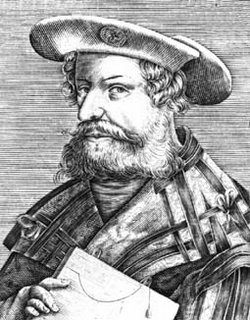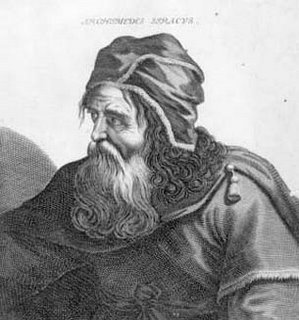xn + yn = (x + y)(x + αy)(x + α2y)*...*(x + αn-1y)
In the above factorization, n is an odd prime and α is a root of unity where αn = 1 and αi ≠ 1 for all 1 ≤ i ≤ n-1.
To establish this refactorization, I will be using the Fundamental Theorem of Algebra.
The main idea behind the Fundamental Theorem of Algebra is that for any given polynomial of a single variable of order n, there are at least n zeros to this equation in the complex domain.
This is an easy proof to state but difficult to prove. Rene Descartes and Jean le Rond d'Alembert knew about this result but it was not until Carl Friedrich Gauss that the fundamental theorem was rigorously proved. d'Alembert thought that the existence of a minimum point for a complex equation was obvious and needed no proof. I do not find this point so obvious so I begin with its proof.
The details in today's proof are taken from B. N. Delone's article on Algebra from Mathematics: Its Content, Methods, and Meaning by A. D. Aleksandrov, A. N. Kolmogorov, and M. A. Lavrent'ev and translated by S. H. Gould.
Theorem 1: Bolzano-Weierstrass Theorem
If a rectangle contains an infinite sequence of points (z1, z2, ..., zn, ... in its interior, then there exists a point z0 such that in any arbitrarily small neighborhood of z0, there are infinitely many points of the sequence z1, z2, ..., zn, ...
Proof:
(1) Let R1 be a rectanlge that contains an infinite sequence of points.
(2) We divide it up into 4 equal parts using two lines parallel to each of its sides.
(3) At least one of these four parts contains infinitely many points, let us label it R2
(4) We now divide up R2 into 4 equal parts using two lines parallel to each of its sides.
(5) One of these four parts contains infinitely many points and we label it R3
(6) In this way, we are able to generate a sequence of nested rectangles which we can label R1, R2, ..., Rn
(7) We can think of each side of this rectangle representing two nested intervals that exist on the x and y axises.
(8) Using Lemma 1 here, we there exists a point on the x-axis and a point on the y-axis that each of these nested intervals have in common.
(9) But this means that there is a point within the nested rectangles such that any arbitrary small neighborhood contains an infinity of points.
QED
Theorem 2: There exists a minimum point for c0xn + c1xn-1 + ... + cn.
Let f(x) = c0xn + c1xn-1 + ... + cn.
There exists a value x0 such that w0 = c0(x0)n + c1(x0)n-1 + ... + cn where absolute(w0) is the minimum value.
Proof:
(1) Let g = absolute(f(0))
(2) Let G be a number greater than g.
(3) Let R be a number such that if absolute(x) > R, then absolute(f(x)) is greater than G
(4) Now, if f(0)=0, then x0=0 and w0=0 so we can assume going forward that f(0) ≠ 0
(5) If f(0) is greater than 0 and all f(x) ≥ g, then x0=0 and w0=g so we can assume that there exists at least 1 point x' such that absolute(f(x')) is less than g.
(6) Based on a nonzero g, we can set up the follow sequence:
0, g/n, 2g/n, ..., ng/n = g
(7) We can find a value i, cn such that cn = (i/n)g and all values absolute(f(x)) ≥ cn.
(8) From i, we can also find a value cn' such that cn' = [(i+1)/n]g and there exists at least one value x' such that absolute(f(x')) is less than cn'
(9) We can find cn,i,cn' regardless of the value of n so we can let n increase to infinity.
(10) Now for all values of n, we can assume that absolute(x) ≤ R since if absolute(x) is greater than R, then absolute(f(x)) is greater than G and therefore greater than g. For purposes here, let's call these values xn
(11) So, we only need to consider the points xn that lie inside a rectangle of sides 2R and with its center at the origin.
(12) By Theorem 1 above, there exists a point z0 such that every neighborhood of z0 contains infinitely many points of the sequence z1, z2, ..., zn. Let us call this point x0
(13) For any point x, we have:
absolute(f(x)) is greater than cn = cn' - g/n which is greater than absolute(f(xn)) - g/n = absolute(f(x0)) + absolute(f(xn)) - absolute(f(x0)) - g/n.
(14) This inequality is true for all values of n so as n increases toward infinity, we see that difference absolute(f(xn)) - absolute(f(x0)) becomes arbitrarily small in absolute value with g/n.
(15) Consequently, all absolute(f(xn)) ≥ absolute(f(x0)) so x0 is the minimum point.
QED
References
- A. D. Aleksandrov, A. N. Kolmogorov, M. A. Lavrent'ev, Mathematics: Its Content, Methods, and Meaning.









